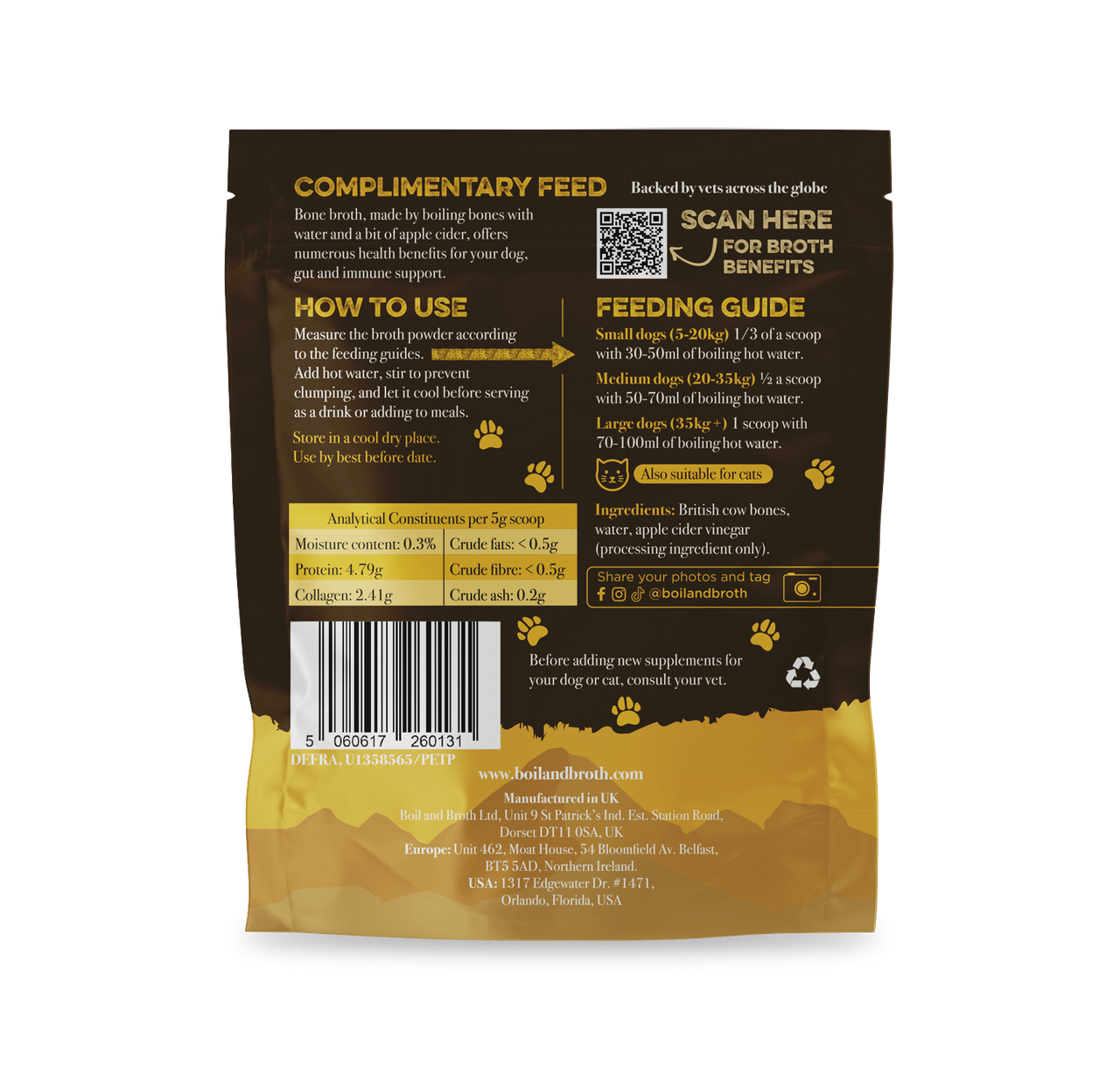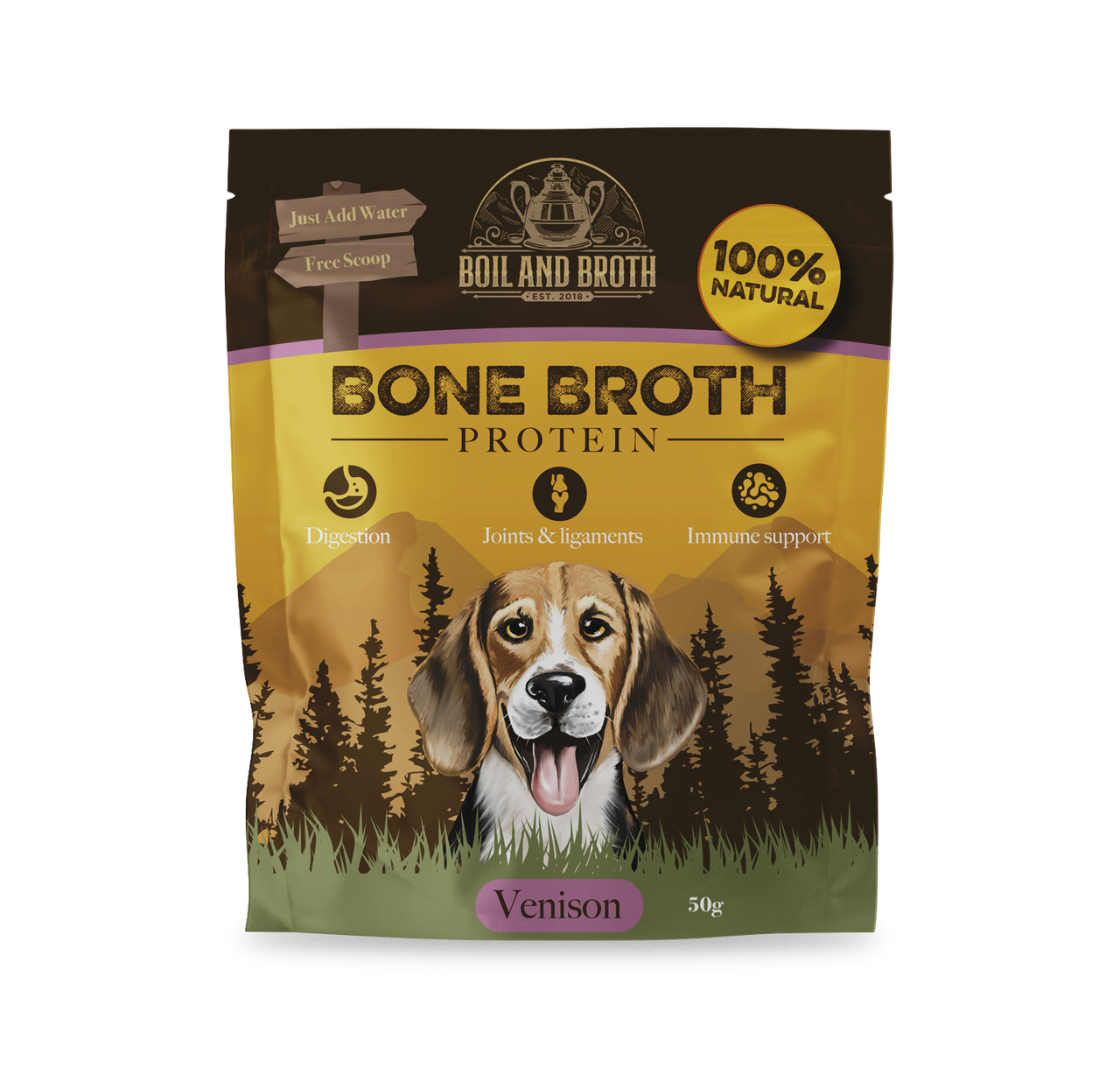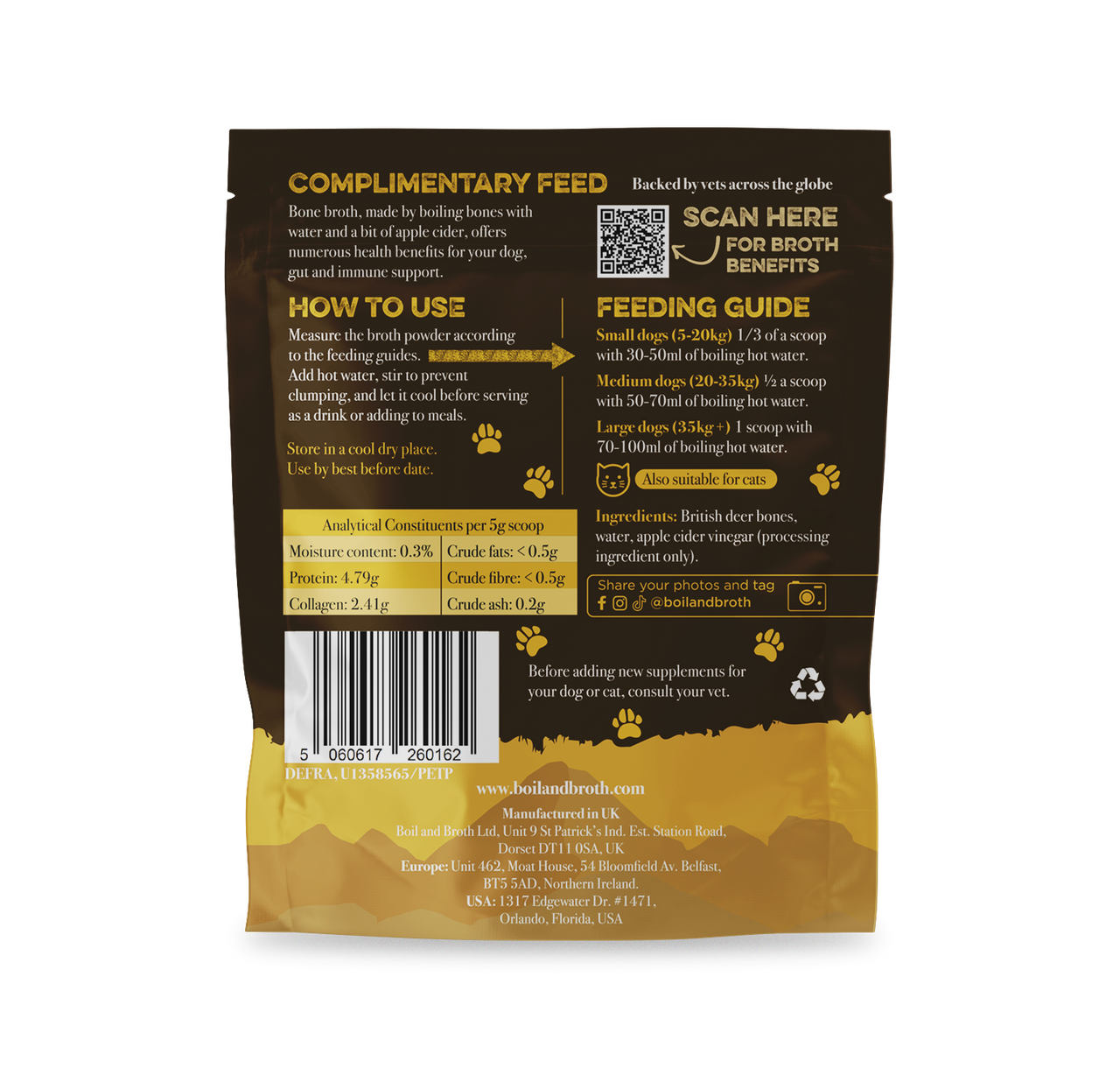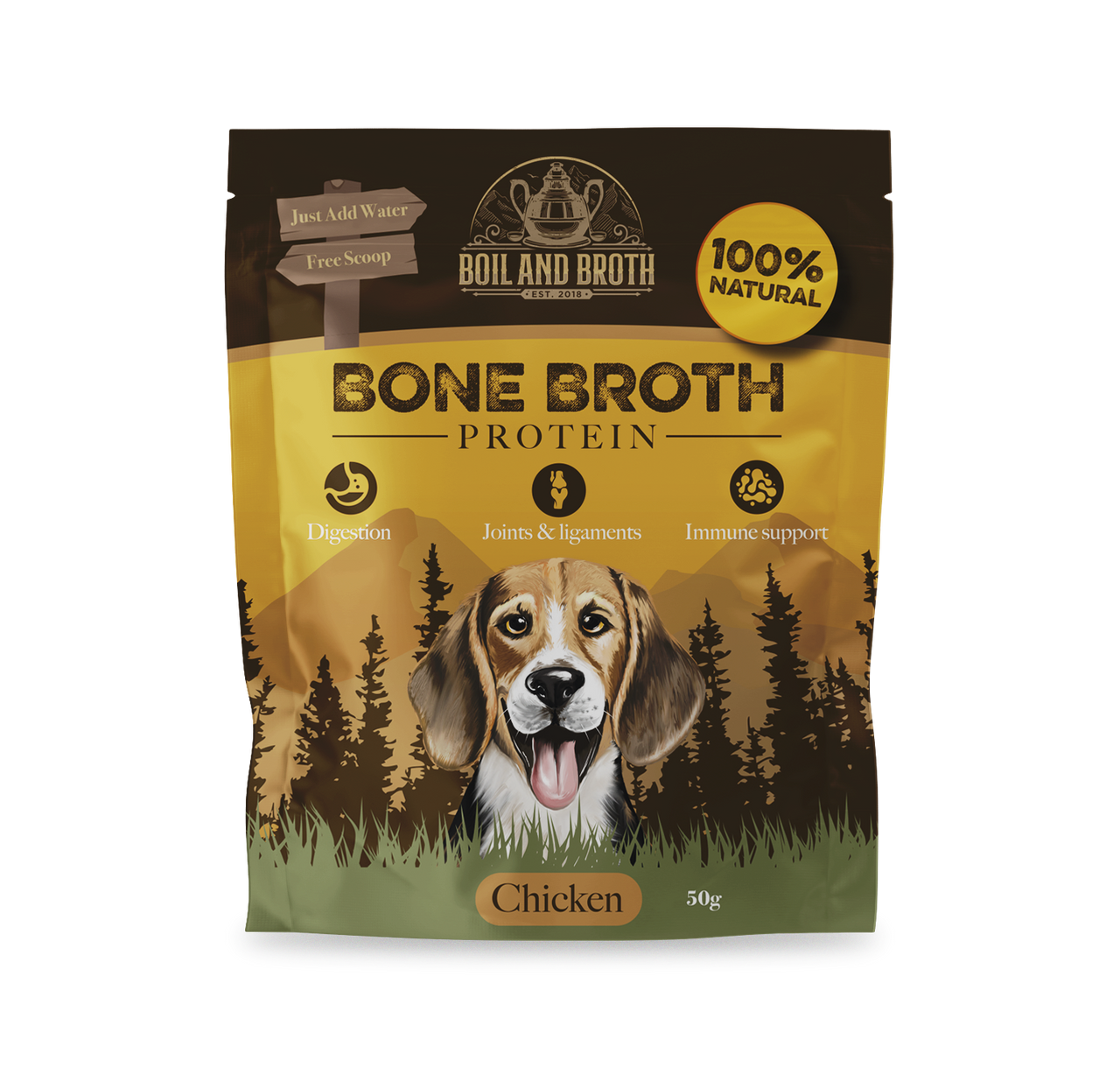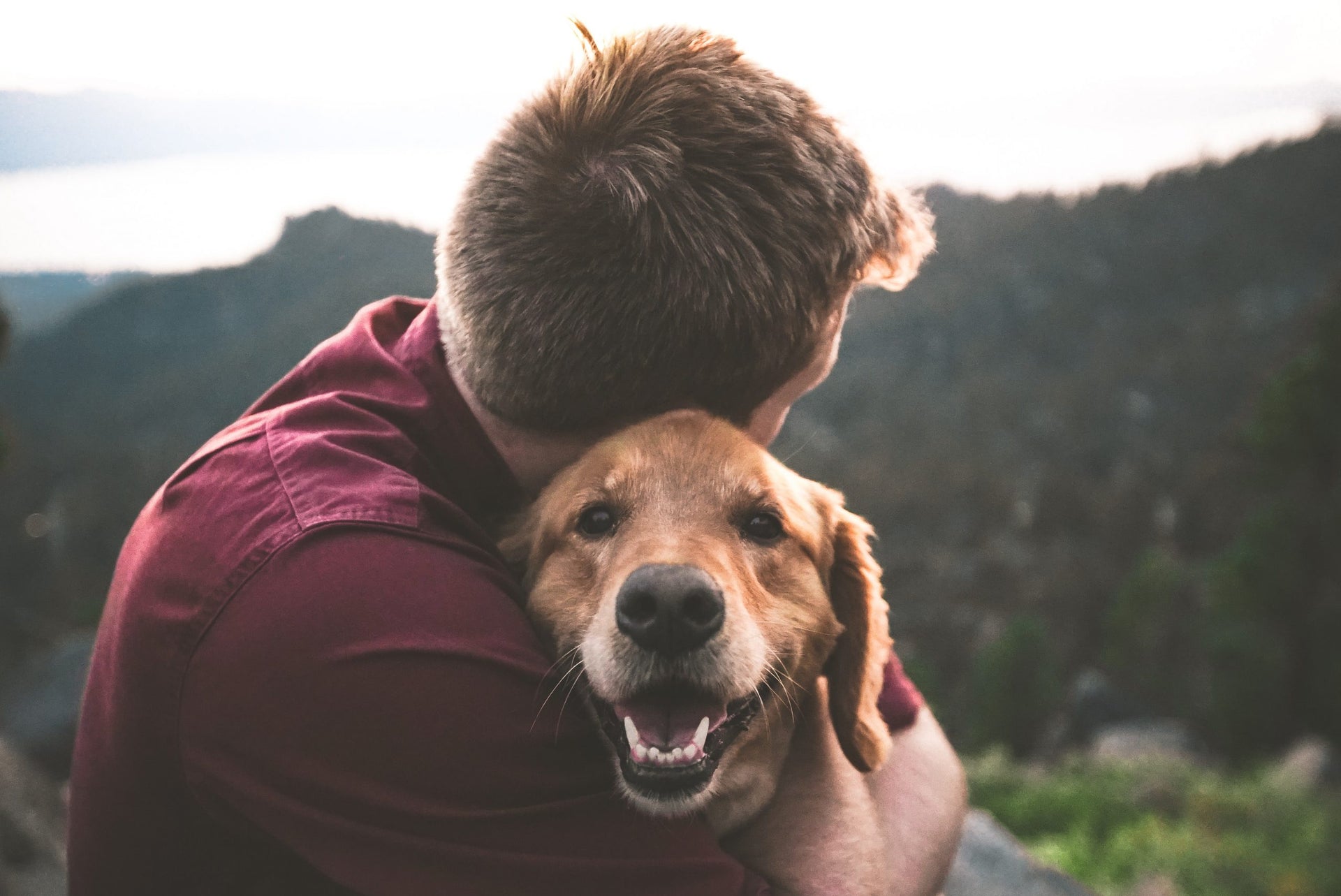
Help for bone and joint health in dogs
| Finding help for bone and joint health in dogs can be a minefield with the amount of information available online, but it’s a serious matter to consider and important to gather information from credible sources. |
Osteoarthritis in dogs can often lead a dog owner to seek Veterinarian help. Vets will likely prescribe painkillers and / or anti-inflammatories but did you know that foods can help too? This blog provides easy food additions which can support bone and joint health in your dog.
The Role of Connective Tissue in Bone HealthDamage to the bone or connective tissue can lead to pain and inflammation, most common in older dogs or through injury. The signs of joint and bone degeneration include: stiffness, limping, discomfort during exercise, a reluctance to jump or climb, and reduced activity. The role of connective tissue in the body (such as cartilage, joints, ligaments and tendons) is to support and connect. Connective tissue is made up of collagen and elastin; collagen holds everything together, providing a scaffold for strength and structure, whilst elastin helps tissues to resume their shape after contraction. Nourishing your dog’s connective tissue with foods that support collagen and elastin formation can help to keep the tissue healthy. Cartilage, with its structural component chondroitin acting as a shock absorber, is a smooth and flexible tissue that provides protection to the ends of bones. Glucosamine protects chondrocyte cells which help to maintain cartilage structure. Feeding food that contains chondroitin and glucosamine can help to prevent or reduce excessive degeneration. |
My Top Foodie Tips for Supporting Bone Health:
Bone broth contains collagen but also gelatine, glucosamine, glycosaminoglycans, and glycine which help to repair connective tissue, thanks to their anti-inflammatory amino-acids.
Feeding a range of organic and grass-fed proteins can help to maintain and repair damaged tissue. Tissues in the body are made up from single units of proteins called amino-acids so by including a range of proteins your dog obtains the vital amino-acids needed to repair damaged tissue effectively – we are what we eat! Grass-fed is recommended because these proteins contain higher levels of omega 3 compared to grain-fed animals, which act as a powerful anti-inflammatory.
Omega 3 is also abundant in oily fish. Inflammation can build up around joints causing painful swelling and restricted movement and scientific studies have shown omega 3 can improve movement and reduce swelling in humans. Mackerel, sardines, salmon, herring and sprats are some good choices; if you are feeding your dog raw and exclude fish for this reason, then a fish oil supplement could be a consideration.
| Seafood such as mussels, shrimp, prawns and green-lipped mussels contain mucopolysaccharides – the building blocks of tissue and an important component of cartilage. Seafood should be fed in small quantities as this food group is high in sodium. Too much sodium in the body can cause calcium to be pulled from the bone to maintain blood pH, leading to bone weakening – something we would wish to avoid. However, it may be beneficial in moderation or alternatively you might consider a GLM supplement. |
| Purple foods contain anthocyanidins (the compounds which make foods purple); these compounds link collagen fibres together and strengthen connective tissue. Purple broccoli, purple sweet potato, beetroot and red cabbage are some of my favourites to include in my dog’s diet. If you are feeding vegetables to dogs, it is important to make them digestible whilst retaining nutrients; I find cooking them whole helps to retain the compounds and then chop and mash or blend to aid digestion. |
Cruciferous vegetables contain glucosinolates which provide sulphur. In the process of sulfation, sulphur is used to produce glucosamine and chondroitin. Cauliflower, broccoli, box choy and sprouts are some super examples. For the humans out there, artichokes, onion and garlic are great choices too.
Beef and beef liver are rich in zinc which is required for the repair and production of connective tissue. Zinc is commonly low in most home-prepared diets, unless you are feeding predominantly beef, and I therefore include beef as a food source each day. Beef liver contains copper which is required for the maturation of collagen. A daily 5g of beef liver is more than enough for a small dog to meet their copper needs; excessive feeding of beef liver may cause black stools so it is advisable to reduce intake should this happen until stools return to normal colour.
A sweet treat can be beneficial too, either a piece of apple or pineapple as these fruits contain quercetin and bromelain, respectively. These lovely compounds have anti-inflammatory properties as well as a little vitamin C which is needed for collagen production.
| Non-foodie tips! The cold and rain can impact the condition so keep your dog off cold floors, away from drafts and in a nice warm bed at night, and minimise impact from stairs and jumping. Short and frequent is the key when it comes to exercise and why not follow with a gentle massage with a little warmed coconut oil? And it goes without saying that it is important to keep your dog’s weight in check as excessive weight can exacerbate degeneration too.
The food list above should be considered as an addition(s) to a current diet. Single foods should not be relied upon for any lengthy period of time as each food has a varying nutrient profile, potentially leading to imbalances within a dog’s given diet. Further, the foods mentioned will not suit all dogs as they vary in tolerance, so always introduce new foods slowly. The recommendations are for a healthy dog suffering from mild symptoms of bone and joint disorders only. If your dog suffers from a pre-existing condition, such as pancreatitis (where a low-fat diet is required), or kidney issues (where low-protein is required) you should not make dietary changes without advice from a Veterinarian or Nutritional Therapist. |
| Disclaimer: Nutrients never work alone. Nor do they have a single function; a complete and balanced diet is vital to make sure your dog is getting all the nutrients they need for optimal health long-term. If your dog is displaying symptoms, it is prudent to speak to a qualified professional to assess their diet and make sure all the required nutrients are being provided and in the correct balance. |





